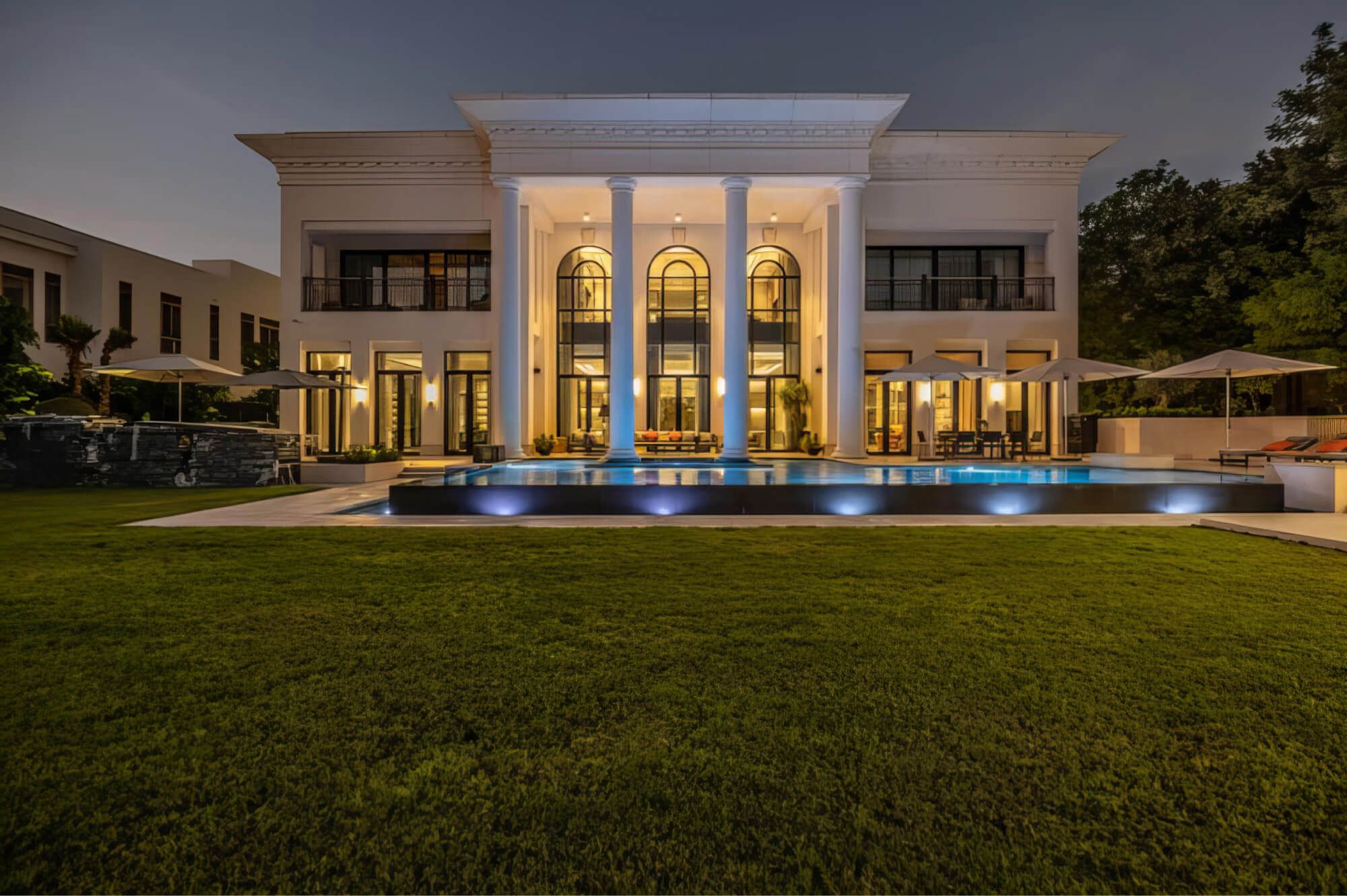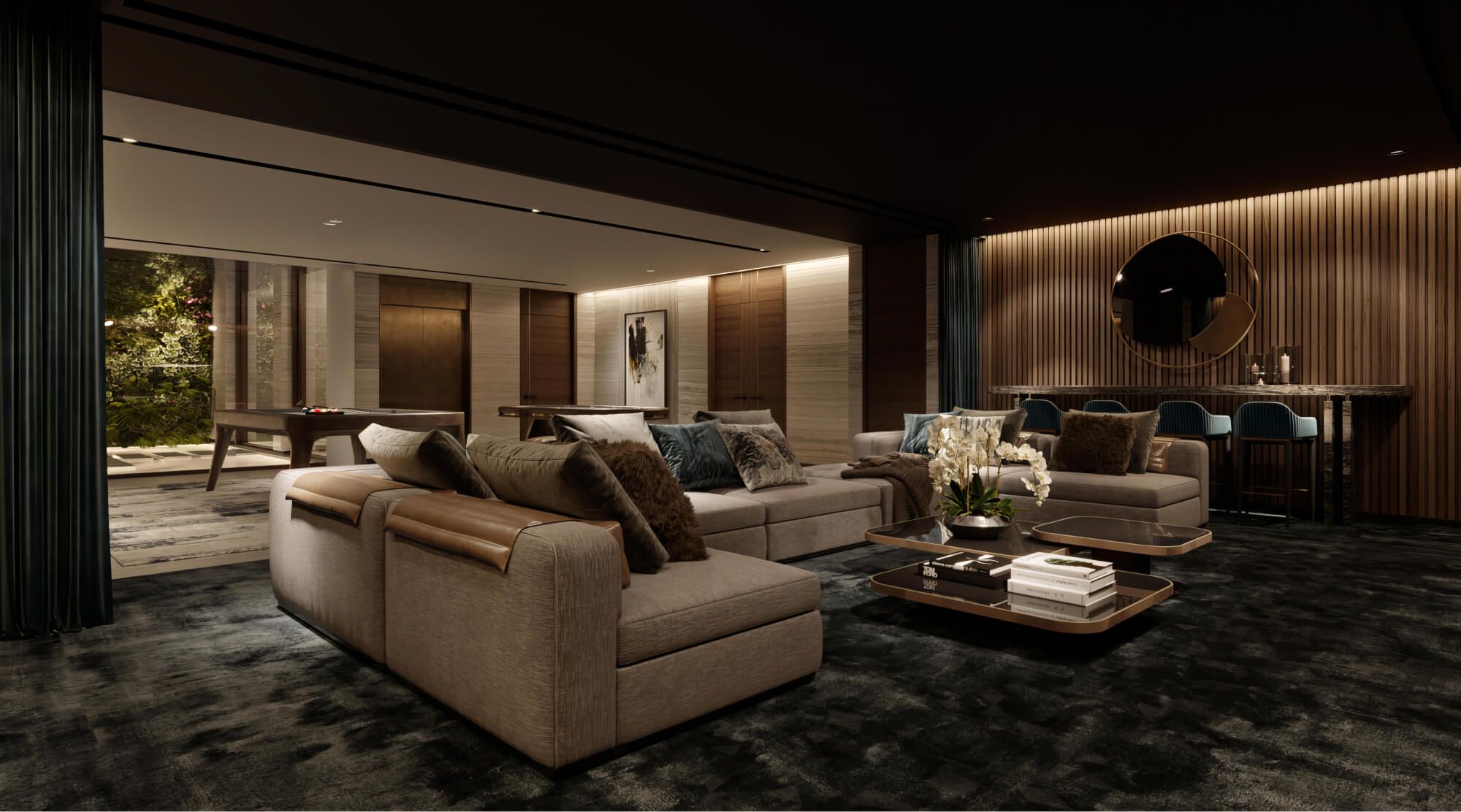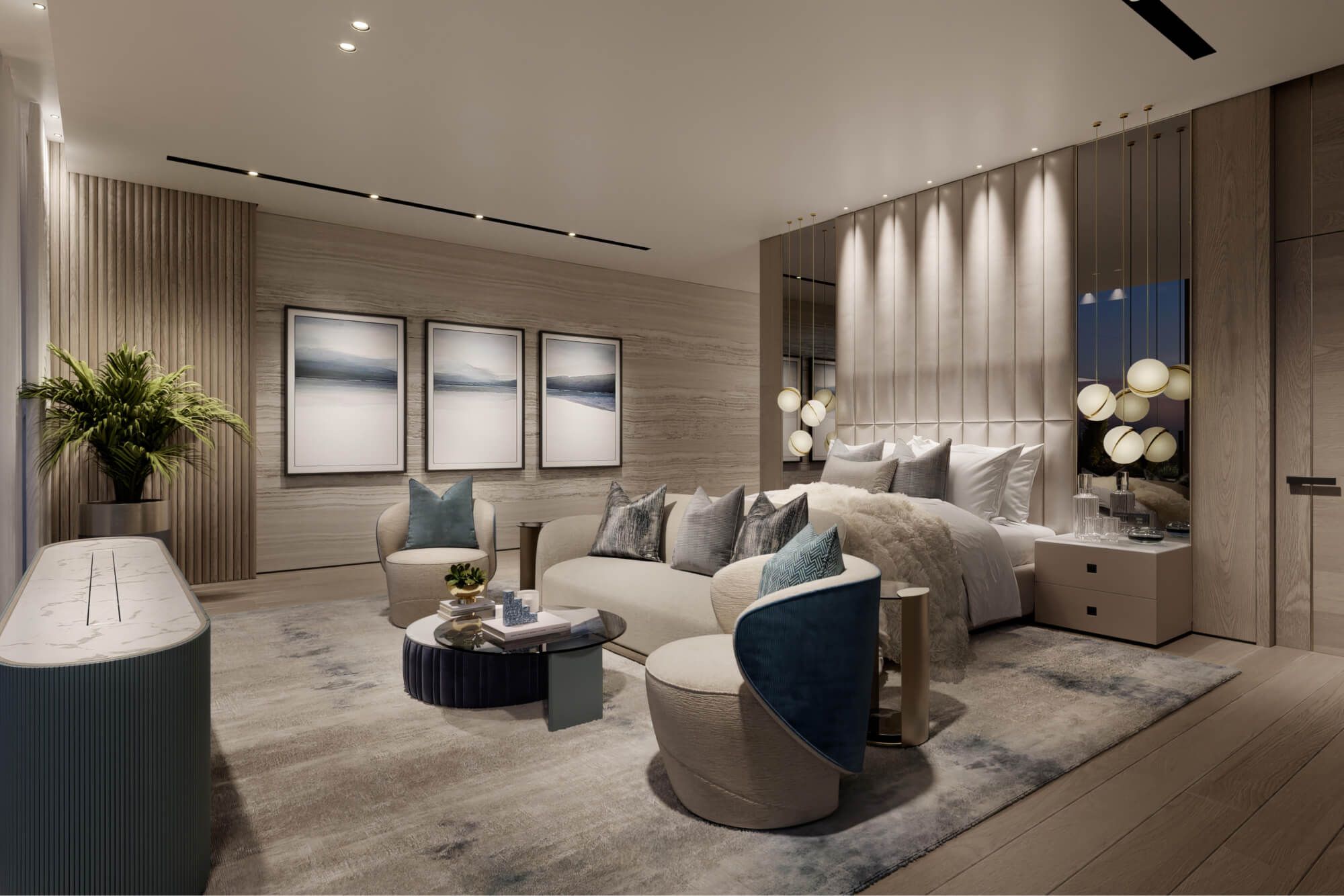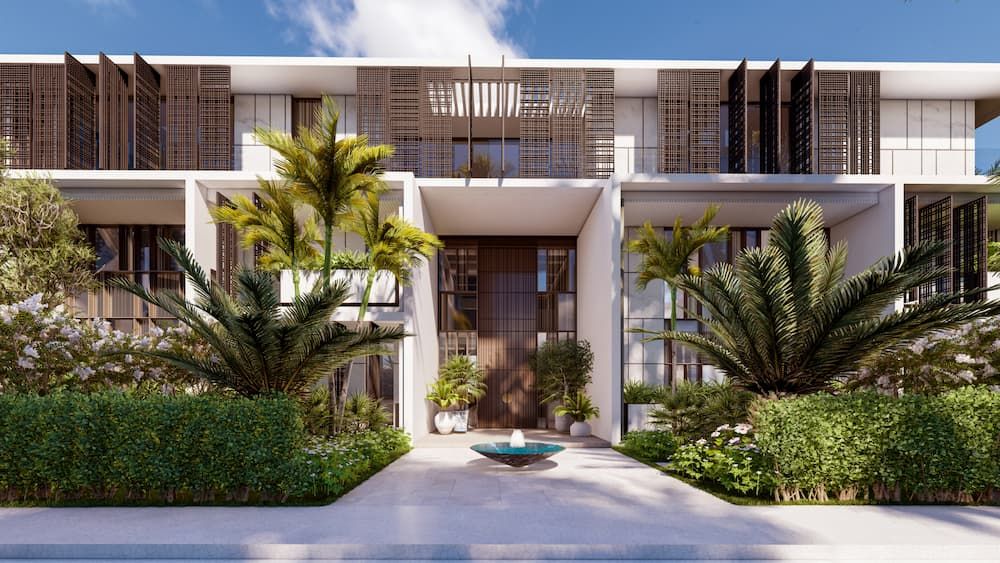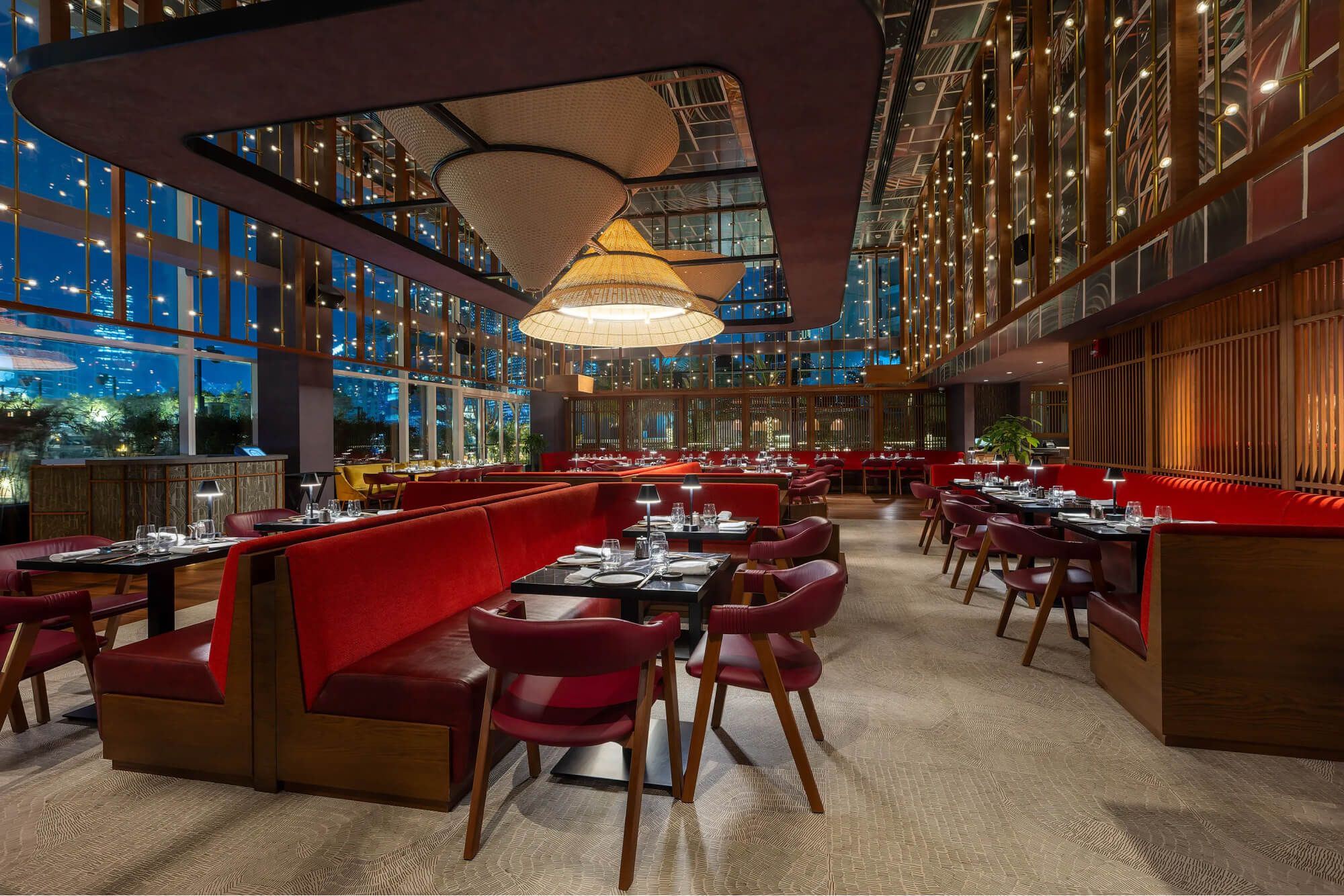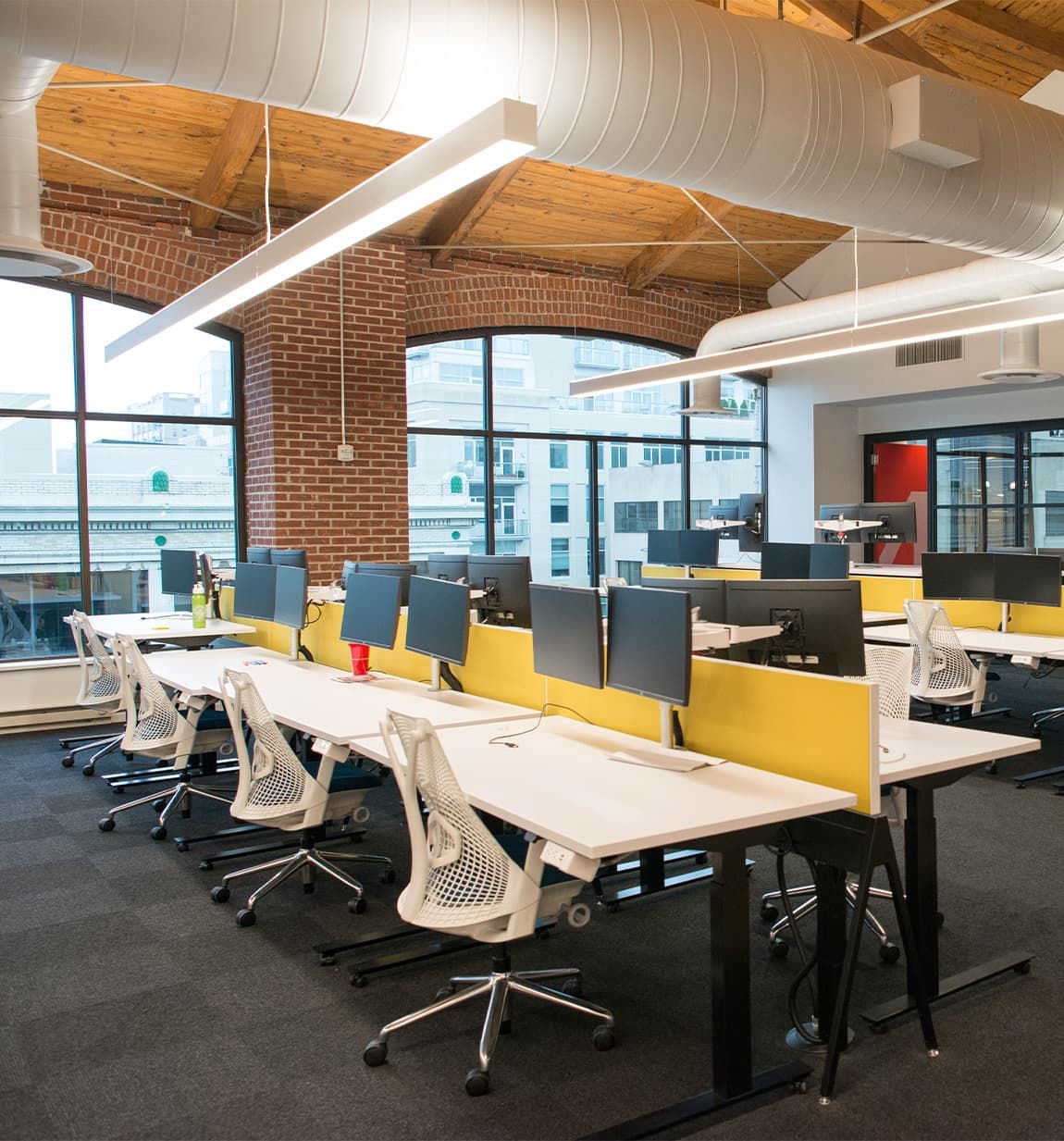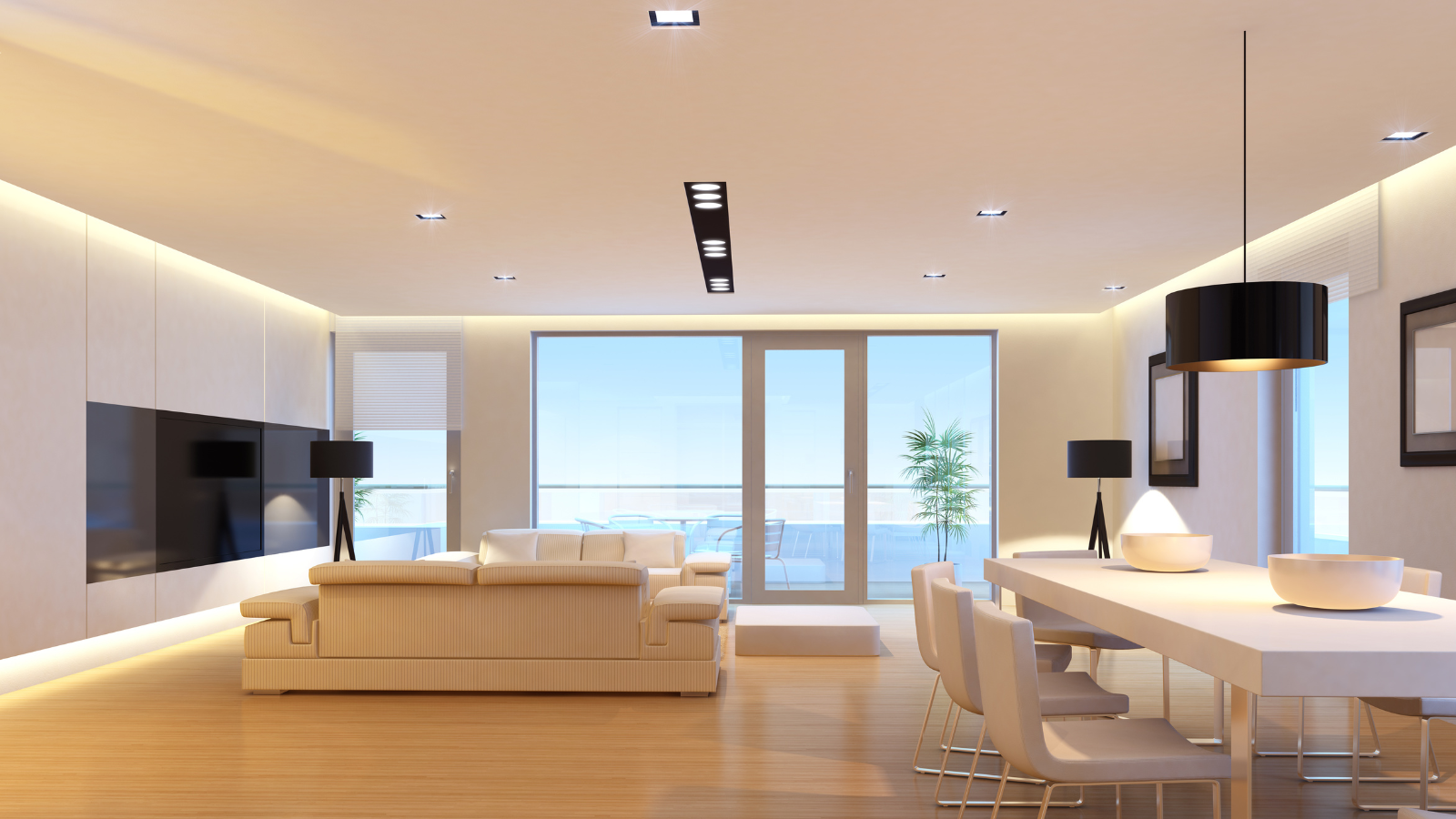Previously, interior design was primarily focused on the aesthetics of a space, such as enhancing the appearance and décor of homes. However, recent developments have positioned interior design as a critical component of the overall building process. In the United Arab Emirates (UAE), where the construction industry is synonymous with architecture, luxury, and innovation, interior design plays a pivotal role in ensuring that construction projects are not only visually appealing but also highly functional.
The interior design services market is projected to experience significant growth over the next few years. By 2024, the market size is expected to reach USD 137.93 billion. This upward trend is anticipated to continue, with the market growing at a compound annual growth rate (CAGR) of 5.13%.
In this blog, we will explore the different aspects of interior design support in the construction process, from the creative input of designers during the initial stages to the role of design managers during execution. We will focus on the contributions of interior design firms in the UAE, highlighting their influence in transforming various spaces—be it residential, commercial, or hospitality projects —into exceptional environments that seamlessly integrate traditional and contemporary architectural styles.
What does an Interior Designer do?
Interior design has become a vital persona in the UAE’s thriving construction industry. In an era where high-rise towers, luxury villas, and landmark developments dominate the skies, interior design services ensure that the interiors of these structures are just as impressive as the exteriors. This is particularly evident in cities like Dubai and Abu Dhabi, where there is a strong demand for interior design companies to create bespoke, high-end spaces that cater to both personal and commercial requirements.
In the context of construction, interior designers go beyond surface-level décor to take responsibility for the practical arrangement of spaces. They optimise these spaces for functionality while ensuring that aesthetic goals are met. This integration of design and function is crucial in construction projects especially for project managers, where every decision they make can have long-term implications on usability and cost-efficiency.
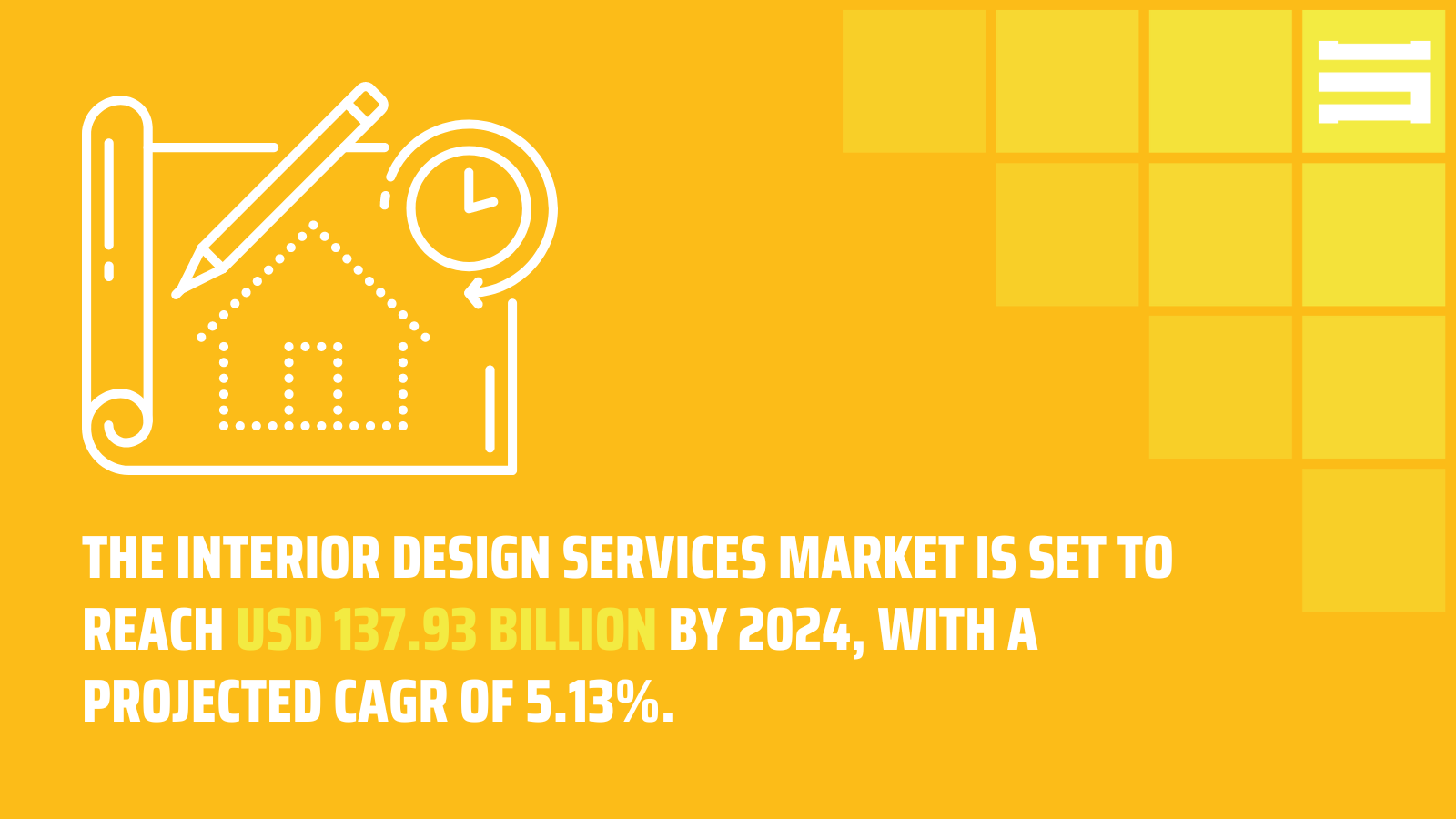
How Interior Design Fits into Construction Projects
1. Conceptual Design and Planning
During the earliest stages of a construction project, interior design companies collaborate with architects and engineers to develop the project’s overall vision. This includes planning for the efficient use of space, identifying client needs, and ensuring that the design concept can be executed within the project’s structural and regulatory constraints. Whether it’s a luxury apartment or a large commercial space, design development in construction begins here.
In cities like Dubai, where interior design firms are often tasked with creating visually striking yet functional spaces, the early involvement of designers is critical. By working closely with construction teams during the planning stages, interior designers help to prevent costly changes later in the project and ensure that the design is seamlessly integrated into the overall construction process.
2. Collaborative Design Process
One of the most significant contributions of interior design firms in the UAE to the construction process is the collaborative development of design concepts. In a construction project, the vision for interior spaces often evolves over time. Interior designers work closely with architects, structural engineers, and builders to refine the design, making those adjustments based on factors like budget constraints, material availability, and client feedback.
Design management companies play an integral role in this process by acting as a bridge between the creative design team and the technical construction team. By coordinating the efforts of different professionals, design management services ensure that the project remains on track, both in terms of time and cost in coordination with the commercial and project management teams of the project.
For instance, interior design firms in Dubai often specialise in high-end commercial projects, such as hotel lobbies or retail outlets, where branding and customer experience are paramount. These spaces must not only look impressive but also function efficiently, providing a seamless experience for guests or customers.
The Role of Interior Designer’s in Construction Project
The role of interior design companies in construction projects is significant, extending beyond just aesthetics. They are involved in everything from selecting the right materials to arranging interiors in a way that enhances functionality and appeal. Their expertise ensures that the final product is not only visually striking but also practical and aligned with the client’s vision. Below, we explore some of the key contributions that interior design companies make during the construction process:
1. Optimisation of Space and Utilisation
Space planning is one of the primary responsibilities of interior design companies in projects across the UAE and around the world. Interior designers are tasked with creating configurations that balance aesthetic value with practical functionality. Whether designing the interior of a house or planning the layout of a commercial premises, effective space planning is crucial in achieving the desired outcome.
For example, interior design companies in Dubai often undertake space planning for high-end retail spaces, office buildings, or residential properties. In commercial settings, this involves designing the layout to ensure the proper allocation of working zones and customer areas, as well as optimising traffic flow. In residential projects, space planning involves identifying the best locations for various rooms, entrances, and exits to maximise the use of available square footage without any wastage. This careful planning ensures that spaces are both functional and visually appealing, meeting the needs of the users effectively.
It is important to note that the UAE Commercial Interior Fit Out Market was valued at USD 1.49 billion in 2021 and is projected to grow at a CAGR of 9.31% from 2023 to 2027. The rising demand for attractive and appealing designs, along with the growing number of modern offices featuring amazing interior designs and integration with technology, are the primary drivers of this growth.
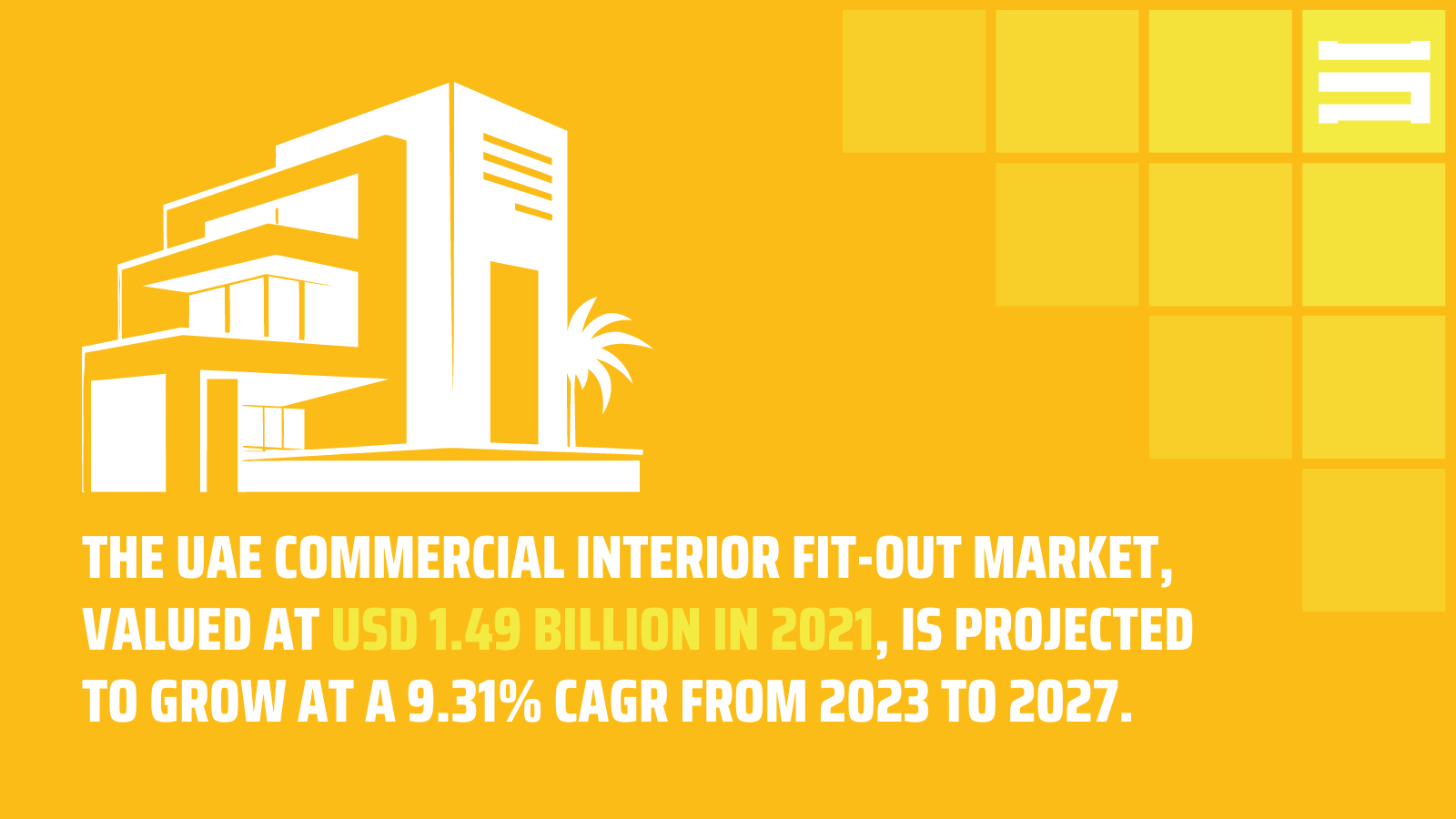
2. Selecting and Finishing the Best Materials
Another significant advantage of hiring interior design companies is their expertise in selecting the best materials and finishes for a given project. The process of material selection can have a substantial impact on the overall look, timeline, and budget of a project. High-quality materials are chosen not only for their durability but also to align with the project's design vision and ensure a cohesive aesthetic.
In the Middle East, particularly in the UAE, where the region is renowned for luxury and opulence, interior design firms are tasked with choosing materials that reflect these values while also being practical and sustainable. For instance, interior designers often select high-quality marble, premium woods, and bespoke finishes that complement the luxurious interior schemes typical of the region. These materials must not only be visually impressive but also withstand the local climate conditions and meet building regulations.
Moreover, in high-traffic areas such as hotels, retail spaces, and office buildings, materials need to be chosen for their robustness and ease of maintenance, without compromising on the visual appeal. This attention to detail in material selection helps create interiors that are not only beautiful but also long-lasting and functional.
3. Design Implementation and Coordination
During the construction phase, interior designers play a pivotal role in ensuring that the design vision is executed correctly. This involves close collaboration with contractors and regular site visits to oversee installations and address any issues that may arise.
By being actively involved on-site, interior designers can ensure that every element of the design is implemented as planned, from the layout and materials to the finer details of the finishes.
In larger projects, such as commercial office buildings or shopping centres, interior design companies often act as design management consultants, coordinating the efforts of various teams.
This includes architects, structural engineers, and contractors, ensuring that the interior design elements are seamlessly integrated into the construction process. By managing these collaborations, interior designers help avoid potential conflicts or delays and ensure that the project remains on schedule and within budget.
How to Choose the Right Interior Design Company in the UAE
When embarking on a construction project, selecting the right interior design company or design consultant is critical to ensuring a successful outcome. Here are some key steps to help you choose the best firm for your needs:
- Define Your Project Goals and Budget Before you begin your search for an interior design company, it’s essential to have a clear understanding of your goals. Are you looking to create a luxury villa, a commercial space, or a restaurant interior? Your goals will shape the type of design firm you should work with. Additionally, having a well-defined budget will help you shortlist companies that can deliver within your financial constraints.
- Research Interior Design Companies The UAE, particularly Dubai, is home to numerous interior design companies. It’s important to do your research and compare various firms based on their areas of expertise, past projects, and client reviews. Consider whether they specialise in the type of space you’re working on – residential, commercial, or hospitality – and whether they have experience in integrating their designs with construction teams.
- Review the Design Portfolios A company’s portfolio is one of the best indicators of its capabilities. Look at previous projects they’ve completed and assess whether their design style aligns with your vision. If possible, visit some of their completed projects to see the quality of their work firsthand.
- Meet Your Design Team Once you’ve shortlisted a few firms, set up meetings with their design teams. This will give you an opportunity to assess their communication style and approach to collaboration. A successful partnership with an interior design company requires open and clear communication throughout the project. It is very helpful to have a lead design consultant on board who can streamline this process. You can read more on the lead design consultant’s scope of work here.
Interior Design Trends that are Happening in UAE
The UAE's reputation as a hub of innovation and luxury in architecture extends into the realm of interior design, setting trends that resonate across the global construction industry. The unique blend of cultural heritage and cutting-edge technology creates a dynamic landscape for interior designers, who are continuously pushing boundaries to create spaces that are both aesthetically striking and functionally superior. Below, we delve deeper into some of the most prominent interior design trends transforming the UAE’s construction projects.
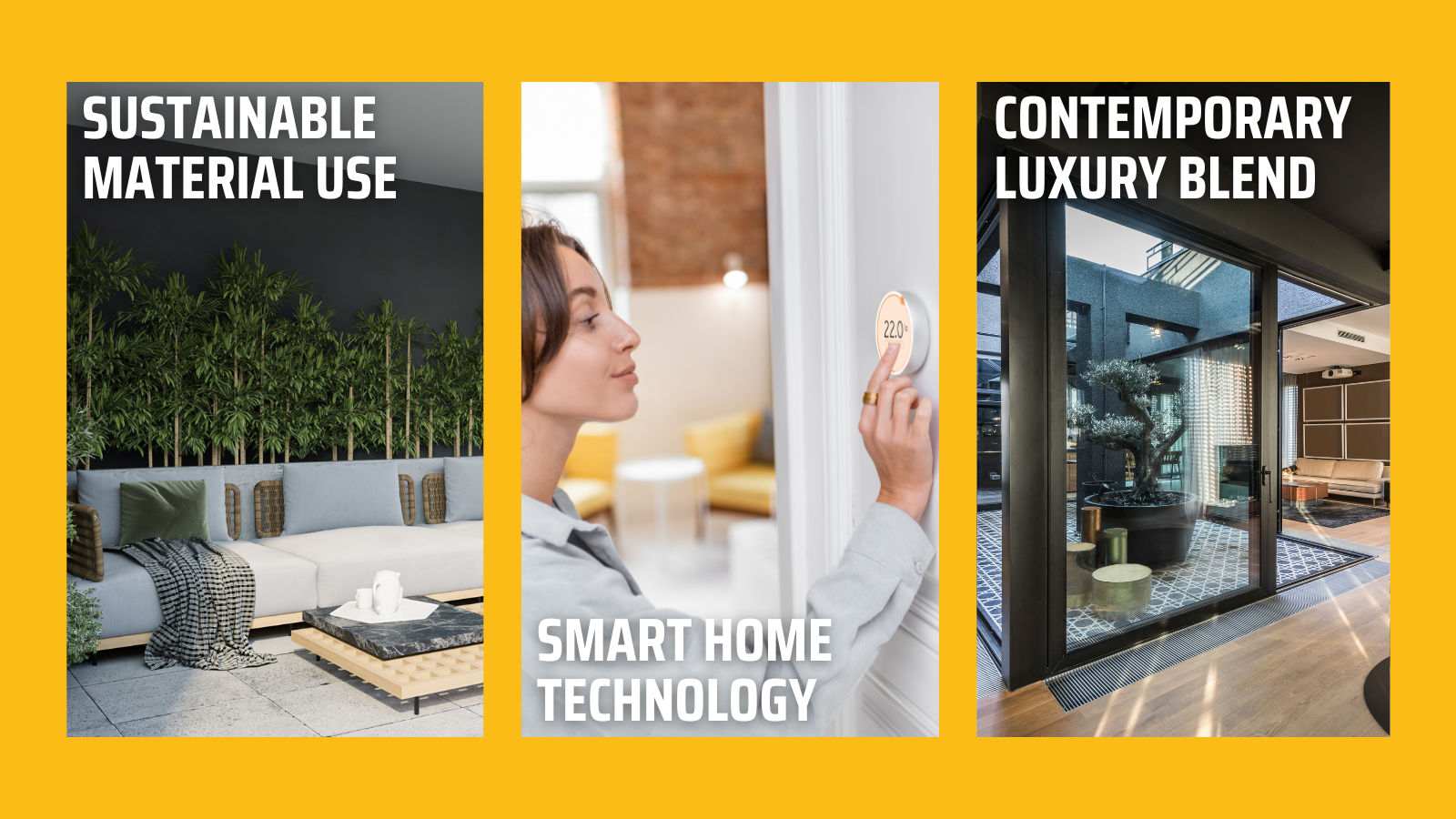
1. Sustainability and Eco-Friendly Design
As the UAE aligns itself with global sustainability goals, the emphasis on eco-friendly interior design is stronger than ever. This trend goes beyond mere aesthetics, focusing on long-term environmental and economic benefits. Interior designers are now prioritising the use of sustainable materials like reclaimed wood, recycled metal, and low-VOC paints, which contribute to healthier indoor air quality and reduced carbon footprint.
Key Features:
- Locally Sourced Materials: Designers are opting for materials like locally sourced stone and sustainable timber, reducing transportation emissions and supporting local industries and thereby, reducing construction project emissions.
- Green Building Certifications: Many projects aim to achieve certifications like LEED or Estidama, integrating sustainable practices into all aspects of design and construction.
- Energy Efficiency: Incorporating energy-efficient lighting, HVAC systems, and smart thermostats is becoming standard practice. Features like solar panels, green roofs, and rainwater harvesting systems are also gaining popularity, especially in high-end residential and commercial projects.
- Biophilic Design: This involves integrating natural elements such as indoor gardens, water features, and natural light to create a sense of connection with nature, promoting well-being and productivity.
Example:
A prime example of sustainable design is the use of natural ventilation systems and solar shading techniques in the Dubai Sustainable City, which not only reduce energy consumption but also create a comfortable living environment in the harsh desert climate.
2. Smart Homes and Integrated Technology
The integration of smart technology into interior design is revolutionising how spaces are experienced in the UAE. With advancements in automation and artificial intelligence, smart homes are becoming the norm rather than the exception, particularly in upscale residential projects. At Stonehaven, we have helped clients with the integration of smart technology into private and luxury villas. You can discover more about these projects by visiting us here.
Key Features:
- Home Automation: Control systems for lighting, temperature, and security are now being incorporated into the design phase, allowing homeowners to manage their homes through mobile devices or voice commands.
- Smart Kitchens and Bathrooms: High-tech appliances like smart refrigerators that suggest recipes, voice-activated faucets, and automated cooking devices are transforming kitchens into efficient, user-friendly spaces. In bathrooms, features like smart mirrors, automatic lighting, and touchless fixtures enhance convenience and hygiene.
- Integrated Security Systems: Advanced security features, including facial recognition and AI-driven surveillance systems, are becoming standard in luxury developments, providing homeowners with peace of mind and enhanced safety.
Example:
In luxury villas in Dubai Hills, smart home technology is integrated with the overall design, offering residents the ability to control everything from lighting and temperature to security and entertainment systems through a unified interface.
3. Cultural Heritage and Modern Luxury
Balancing the UAE's rich cultural heritage with contemporary luxury is a delicate yet popular trend in the region's interior design landscape. This fusion is particularly prominent in hospitality and high-end residential projects, where the demand for unique, culturally resonant spaces is high.
Key Features:
- Traditional Motifs and Modern Forms: Designers often incorporate traditional elements like Islamic geometric patterns, calligraphy, and mashrabiya screens into modern interiors. This creates a unique aesthetic that respects cultural heritage while embracing modernity.
- Luxurious Materials with a Cultural Twist: Materials like marble, gold accents, and handwoven carpets are combined with contemporary furnishings and minimalist layouts to create spaces that are both opulent and sophisticated.
- Regional Art and Craftsmanship: Featuring artwork and craftsmanship from local artists and artisans adds an authentic cultural touch to modern spaces, making them stand out in a globalised world.
Example:
The Emirates Palace in Abu Dhabi is a prime example of this trend, with its interiors combining traditional Arabian design elements like domes and arches with luxurious materials and modern amenities, creating an ambiance of opulence and cultural depth.
Conclusion
Interior design is an integral part of the construction process in the UAE. Whether it’s residential, commercial, or hospitality projects, the collaboration between interior design firms and construction professionals ensures that spaces are both functional and aesthetically pleasing. The role of interior design companies goes beyond decoration; they are responsible for space planning, material selection, and ensuring that design concepts are seamlessly integrated into the construction process.
In the UAE, where luxury and innovation are key, interior designers work closely with design management companies and project managers to create exceptional spaces that reflect the client’s vision. Whether you're developing a high-end villa or a commercial space, the right interior design company can make all the difference.
About us
Stonehaven is a trusted project management company and construction consultant based in Dubai, offering comprehensive construction management services across the UAE with offices located in Dubai, UK and Sri Lanka. As one of the leading project management companies in Dubai, we manage projects from inception to completion, ensuring quality, efficiency, and cost-effectiveness at every stage.
We deliver value through expert project management consultancy services, tailored to meet the unique needs of each client. Our core services include Cost Management, Project Management, Construction Supervision, Engineering Support, Design Support, and Marketing & Communications. Whether you’re looking for construction consultants or project managers in the UAE and wider GCC region, Stonehaven is your trusted partner for achieving excellence in your next project.
At Stonehaven, we specialise in providing comprehensive design support and project management services that bridge the gap between design and construction. Our talented team is committed to delivering bespoke solutions that meet the highest standards of quality and luxury. Whether you're looking to transform a home, villa, or commercial space, we can help you achieve your vision with our tailored interior design services.
Explore our range of interior design and design development services in construction by contacting us today. Let’s create exceptional spaces together.

